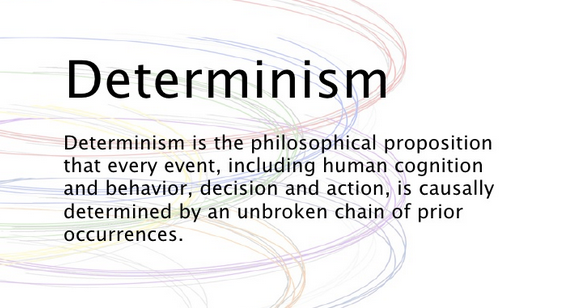BREAKING NEWS
LATEST POSTS
-
The 3 Body Problem and the case against Determinism
It’s becoming clear that deterministic physics cannot easily answer all aspects of nature, at astronomical and biological level.
Is this a limitation in modern mathematics and/or tools. Or an actual barrier?
The 𝐓𝐡𝐫𝐞𝐞-𝐁𝐨𝐝𝐲 𝐏𝐫𝐨𝐛𝐥𝐞𝐦 is one of the most enduring challenges in celestial mechanics, addressing the complex motion of three celestial bodies interacting under gravity. Governed by Newton’s laws of motion and the law of universal gravitation, it seeks to predict the paths of the bodies based on their masses, positions, and velocities. While the Two-Body Problem has exact solutions described by Kepler’s laws, introducing a third body leads to a nonlinear system of equations with no general analytical solution. This complexity arises from the chaotic interactions between the bodies, where even minute changes in initial conditions can lead to vastly different trajectories—a key aspect of chaos theory.
Historically, the Three-Body Problem has fascinated some of the greatest scientific minds. Isaac Newton laid its foundation, but it was Joseph-Louis Lagrange and Leonhard Euler who discovered specific cases with periodic or predictable solutions. Lagrange identified the Lagrange points, stable positions where the gravitational forces and motion of the three bodies balance, while Euler found collinear solutions, where the bodies align on a single line periodically. These solutions, though special cases, have profound implications for space exploration, such as identifying stable regions for satellites orbits.
Despite the chaotic nature of the Three-Body Problem, researchers have discovered periodic solutions where the bodies follow repetitive paths, returning to their original positions after a fixed time. In the 1970s, Michel Hénon, Roger A. Broucke, and George Hadjidemetriou identified a fascinating family of such solutions, now known as the Broucke–Hénon–Hadjidemetriou family. These solutions often involve symmetric and elegant trajectories, such as the figure-eight orbit, where three equal-mass bodies chase each other along a shared path resembling the number eight.
Other periodic solutions include equilateral triangle configurations (where the bodies maintain a triangular shape while rotating or oscillating) and collinear periodic orbits (where the bodies periodically align and reverse directions). These solutions highlight the intricate balance between gravitational forces and motion, offering glimpses of stability within the chaos.
While the Three-Body Problem laid the groundwork for understanding gravitational interactions, the study of higher n-body problems reveals the rich and chaotic dynamics of larger systems, offering critical insights into both cosmic structures and practical applications like orbital dynamics. -
James Gerde – The way the leaves dance in the rain
https://www.instagram.com/gerdegotit/reel/C6s-2r2RgSu/
Since spending a lot of time recently with SDXL I’ve since made my way back to SD 1.5
While the models overall have less fidelity. There is just no comparing to the current motion models we have available for animatediff with 1.5 models.
To date this is one of my favorite pieces. Not because I think it’s even the best it can be. But because the workflow adjustments unlocked some very important ideas I can’t wait to try out.
Performance by @silkenkelly and @itxtheballerina on IG
-
How the VFX industry is recovering from last year’s strikes
Jonathan Bronfman, CEO at MARZ, tells us: “I don’t think the industry will ever be the same. It will recover slowly in 2024. The streaming wars cost studios too much money and now they are all reevaluating their strategies.”
He notes that AI will play a big role in how things shake out. “Technology is pushing out the traditional approach, something which is long overdue. Studios in Hollywood have been operating the same way for decades, and now AI will move them off their pedestal.
“The entire industry is in for a reckoning. I think studios would have come to this realisation eventually, so it was inevitable, but I think the pressure from the strikes accelerated this.”
https://www.vfxwire.com/how-the-vfx-industry-is-recovering-from-last-years-strikes/
-
TLDR Newsletter – Keep up with tech in 5 minutes
Get the free daily email with summaries of the most interesting stories in startups, tech, and programming!
-
Using Meta’s Llama 3 for your business
Meta is the only Big Tech company committed to developing AI, particularly large language models, with an open-source approach.
There are 3 ways you can use Llama 3 for your business:
1- Llama 3 as a Service
Use Llama 3 from any cloud provider as a service. You pay by use, but the price is typically much cheaper than proprietary models like GPT-4 or Claude.
→ Use Llama 3 on Azure AI catalog:
https://techcommunity.microsoft.com/t5/ai-machine-learning-blog/introducing-meta-llama-3-models-on-azure-ai-model-catalog/ba-p/41171442- Self-Hosting
If you have GPU infrastructure (on-premises or cloud), you can run Llama 3 internally at your desired scale.
→ Deploy Llama 3 on Amazon SageMaker:
https://www.philschmid.de/sagemaker-llama33- Desktop (Offline)
Tools like Ollama allow you to run the small model offline on consumer hardware like current MacBooks.
→ Tutorial for Mac:
https://ollama.com/blog/llama3 -
VES – How Generative AI Might Affect VFX Now and In the Future
Panelists include Author and Distinguished Research Scientist in DL/ML & CG at Wētā FX Dr. Andrew Glassner, VFX, Post & Technology Recruiter and VES 1st Vice Chair Susan O’Neal, CTO at Cinesite Group and VES Technology Committee member Michele Sciolette and Shareholder & Co-Chair of Buchalter’s Entertainment Industry Group and Adjunct Professor at Southwestern Law School Stephen Strauss, moderated by VES Technology Committee member and Media & Entertainment Executive, CTO & Industry Advisor Barbara Ford Grant.
FEATURED POSTS
-
Rec-2020 – TVs new color gamut standard used by Dolby Vision?
https://www.hdrsoft.com/resources/dri.html#bit-depth

The dynamic range is a ratio between the maximum and minimum values of a physical measurement. Its definition depends on what the dynamic range refers to.
For a scene: Dynamic range is the ratio between the brightest and darkest parts of the scene.
For a camera: Dynamic range is the ratio of saturation to noise. More specifically, the ratio of the intensity that just saturates the camera to the intensity that just lifts the camera response one standard deviation above camera noise.
For a display: Dynamic range is the ratio between the maximum and minimum intensities emitted from the screen.
The Dynamic Range of real-world scenes can be quite high — ratios of 100,000:1 are common in the natural world. An HDR (High Dynamic Range) image stores pixel values that span the whole tonal range of real-world scenes. Therefore, an HDR image is encoded in a format that allows the largest range of values, e.g. floating-point values stored with 32 bits per color channel. Another characteristics of an HDR image is that it stores linear values. This means that the value of a pixel from an HDR image is proportional to the amount of light measured by the camera.
For TVs HDR is great, but it’s not the only new TV feature worth discussing.
(more…)
-
AnimationXpress.com interviews Daniele Tosti for TheCgCareer.com channel

You’ve been in the VFX Industry for over a decade. Tell us about your journey.
It all started with my older brother giving me a Commodore64 personal computer as a gift back in the late 80′. I realised then I could create something directly from my imagination using this new digital media format. And, eventually, make a living in the process.
That led me to start my professional career in 1990. From live TV to games to animation. All the way to live action VFX in the recent years.I really never stopped to crave to create art since those early days. And I have been incredibly fortunate to work with really great talent along the way, which made my journey so much more effective.
What inspired you to pursue VFX as a career?
An incredible combination of opportunities, really. The opportunity to express myself as an artist and earn money in the process. The opportunity to learn about how the world around us works and how best solve problems. The opportunity to share my time with other talented people with similar passions. The opportunity to grow and adapt to new challenges. The opportunity to develop something that was never done before. A perfect storm of creativity that fed my continuous curiosity about life and genuinely drove my inspiration.
Tell us about the projects you’ve particularly enjoyed working on in your career
(more…)




